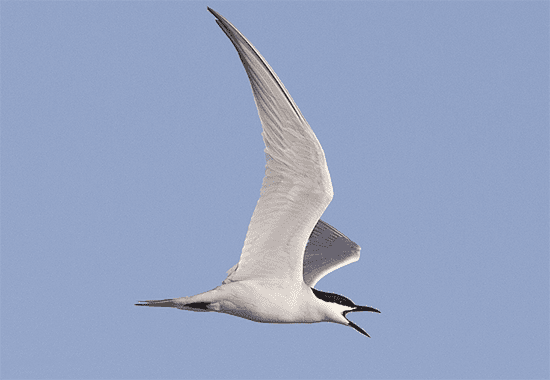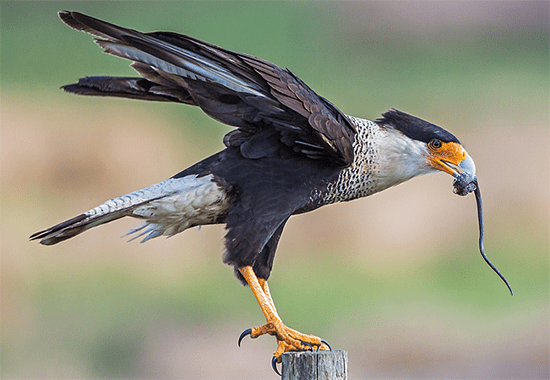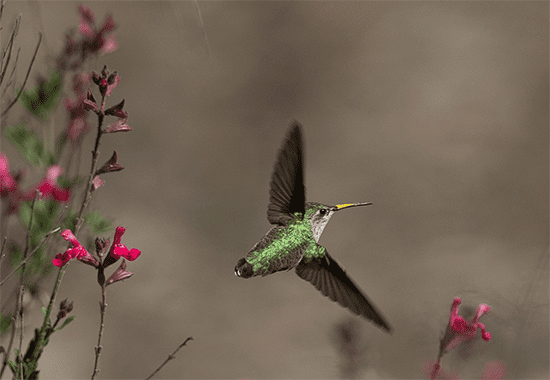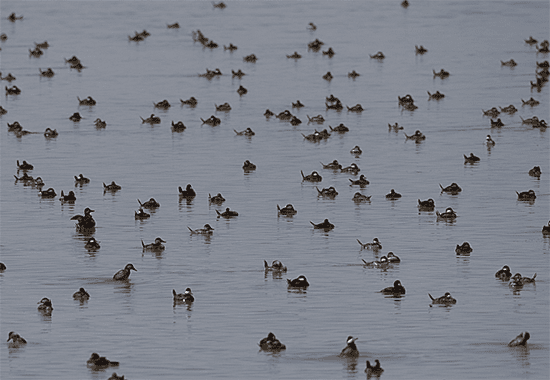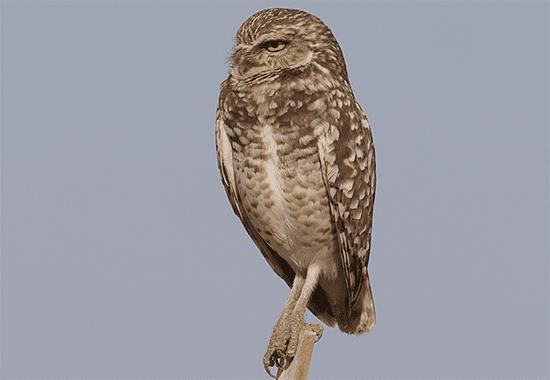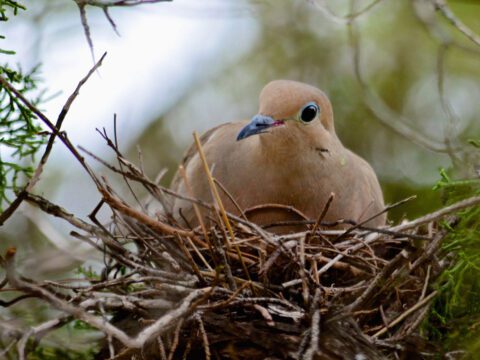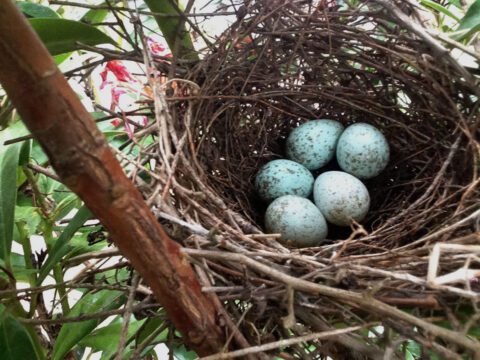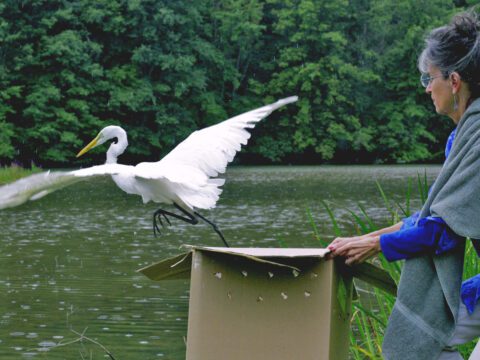Team Sapsucker Is Ready to Connect the Birds on 500-Mile Big Day Run
May 2, 2014
A Gull-billed Tern flies above the Salton Sea. 
Crested Caracaras live in the Arizona desert—but will they be visible in the early morning? 
Calliope Hummingbirds are on the move and may turn up in the Tijuana River valley. 
Scouters found the Salton Sea teeming with Ruddy Ducks and other waterfowl. 
Burrowing Owls are one of the raptor highlights of the Salton Sea run.
Slideshow images courtesy of Chris Wood and Brian Sullivan.
On Friday morning of Scout Week, Team Sapsucker was spread out across 500 miles of Arizona and California, timing their last tricky route sections and looking for a few stubborn holdout species. By midday they were starting their convergence on Tucson, Arizona, where the Big Day—our biggest conservation fundraiser of the year—will start at the stroke of midnight, May 3, 2014.
Despite a Scout Week that seemed far too short (given this year’s all-new route through unfamiliar terrain) and fierce Santa Ana winds that all but shut down scouting in the Cuyamaca Mountains, things are looking good for the day of the event. In fact, there are so many birds in play that the biggest problem is getting to all of them.
Tough Choices in San Diego
In San Diego, where the team will finish the day, I talked to Chris Wood and Jessie Barry as they scouted the Tijuana River Valley. They had made the tough decision to cut La Jolla from their list, greatly reducing their chances for what Wood calls “higher-tier” seabirds: shearwaters, Parasitic Jaegers, storm-petrels, as well as rocky shorebird species like Surfbirds and Wandering Tattlers. But those birds are never a sure bet, and would require at least 45 minutes to get to.

Instead, they’ll try to pick up Clapper Rails, Sanderlings, Elegant and Royal Terns, and Red-throated Loons at the Tijuana River Valley beach, and this will leave them time to look for migrants—this week they’ve seen Olive-sided Flycatchers and a very unusual Townsend’s Solitaire along the route—and possibly pick up Least Bittern, Belted Kingfisher, and Common Gallinule in small pockets of wetlands along the way.
They’re also concerned about finding American Goldfinch and Downy Woodpecker. Paradoxically, the team expects to have no trouble with some of the Southwest’s dream birds, like Red-faced Warbler, Whiskered Screech-Owl, and Greater Pewee. “But some of this widespread stuff”—birds that most people have in their backyards—”are going to be really difficult on our extremely southern route,” Wood said. “Tijuana River valley is our only spot for them.”
After dark, in the closing hours of the Big Day, the team will head back into the mountains in search of Spotted Owl and Northern Saw-whet Owl. Now, with the broad outlines of the route decided, Wood was arranging and rearranging the schedule to try to squeeze in birds like Nutmeg Mannikins. These introduced birds have become established in San Diego, and Tim Lenz has yet to see one in the United States; it would be a stylish touch to work it in to the route.
For the day, Wood said he was really looking forward to their first look at the Salton Sea. “That’s going to be really fun,” he said. “That’s one of the first places in California I came to as a kid, when I was 13. I was blown away by the number of birds then, and it still is a spectacle.”
Buckets of Shorebirds at the Salton Sea
Early scouting reports of the Salton Sea suggested poor conditions, leading Andrew Farnsworth and Brian Sullivan to consider the unthinkable: cross it off their route altogether and look for waterbirds in the wetlands around Yuma. Fortunately, those early reports were wrong.
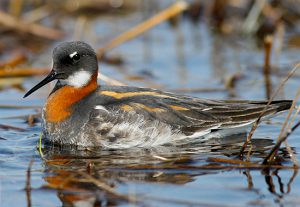
“There are so many birds here it’s out of control,” Farnsworth told me. “I’m looking at a carpet of Red-necked Phalaropes and Ruddy Ducks and Eared Grebes right now.” Other indications of the bounty included 5,000 Brown Pelicans, 400 Stilt Sandpipers, six species of gulls including Yellow-footed Gull, a Baja California specialty, plus a rare Ruff and a Red Phalarope that the team will hope to pick out on Saturday during the brief minutes allotted to the stop. In all they expect to quickly add 50 or 60 species when they arrive at the Salton Sea, and then look for extras.
“Ruff is not a difficult bird to pick out,” Sullivan said. “It’s just in a difficult place on the edge of this really vegetated impoundment. If it’s out in the open in the half-minute we’ll be here, great. Once it’s back in the grass you can forget it.
“Red Phalarope is a different problem. There’s on the order of several thousand Red-necked Phalaropes to look through, and that bird is difficult to pick out. We’ll just put somebody on phalarope patrol and have them specifically looking for this bird.”
Once the Sapsuckers leave the Salton Sea and head to the mountains, things get less certain. They’ll stop in only a couple of places and hope to pick up a few specialties like Mountain Quail, Fox Sparrow, and Lawrence’s Goldfinch. But during midweek scouting, Santa Ana winds were cresting 90 mph and toppling over tractor trailers. Mountain scouting wasn’t really possible.
Squeezing Every Second Out of the Arizona Mountains
Meanwhile, Marshall Iliff and Tim Lenz were scouting the Tucson area. They’d made the difficult decision to bird Mt. Lemmon in the morning instead of Madera Canyon. “It means giving up hope on Elegant Trogon, Blue-throated Hummingbird, Sulfur-bellied Flycatcher,” Iliff said. “But there are so many birds up on Mt. Lemmon.”
The plan for the first 10 hours of the day sounds more like an itinerary for a weekend. Iliff plans to start the Big Day at 10:45 Friday night, piling the Sapsuckers into the van and driving to their first owling spot for a prompt midnight start. Then they’ll swing through the Tucson outskirts for a chance at Barn Owl and Neotropic Cormorant before hitting Madera Canyon at 3 a.m. for possibly six species of owls and two nightjars (the trogons, sadly will be sleeping).
At 4:45 a.m. they’ll be in a desert grassland listening for first grasshopper sparrows to wake up, then Botteri’s sparrows, and then a unique form of Eastern Meadowlark called Lillian’s Meadowlark. As daylight fills in they plan to have a scope on the nest of a Chihuahuan Raven—the team’s “nemesis bird” from 2012 and 2013.
The team will spend the next hour and 15 minutes of precious daylight driving to the top of Mt. Lemmon. But once there, the fun really starts as they drop down through life zone after life zone of new birds. Iliff counted off the elevational descent in bird names: Red-breasted Nuthatch, Wild Turkey, Red-faced Warbler, Greater Pewee, Buff-breasted Flycatcher, Mexican Jay in the oaks, Bell’s Vireo, Crissal Thrasher, down to Cactus Wren among the saguaros.
With a few minutes to spare in the desert, they’ll try to pick up Black Vulture, Say’s Phoebe, Bronzed Cowbird, and Bank Swallow as they head for I-10 and the long drive to the Salton Sea. If they’re not at the I-10–I-8 split outside of Phoenix by 9:55 a.m., Iliff said, the entire Big Day will be in jeopardy.
“There’s just a lot of stuff to see and not a lot of time,” Wood said. ” If we get into trouble early and anything starts running behind, we might not see the ocean. Right now we’re scheduled to see the ocean for the first time maybe 5 minutes after sunset. If we miss that it’s not like we’re missing one or two birds, we’re missing 20 birds.”
For today, the plan is to do final scouting in the morning, last-minute route calculations during the heat of the day, and get to bed by 5 p.m. “That’s not something we’ve been real good about in recent years,” Iliff said. “Usually it’s more like 10 p.m.” Whatever happens, the alarm clock will go off tonight at 10:30 p.m., and the Sapsuckers’ ambitious plan will start to unfold.
Big Day is our biggest conservation fundraiser of the year. Please donate to help our cause.

All About Birds
is a free resource
Available for everyone,
funded by donors like you
American Kestrel by Blair Dudeck / Macaulay Library
